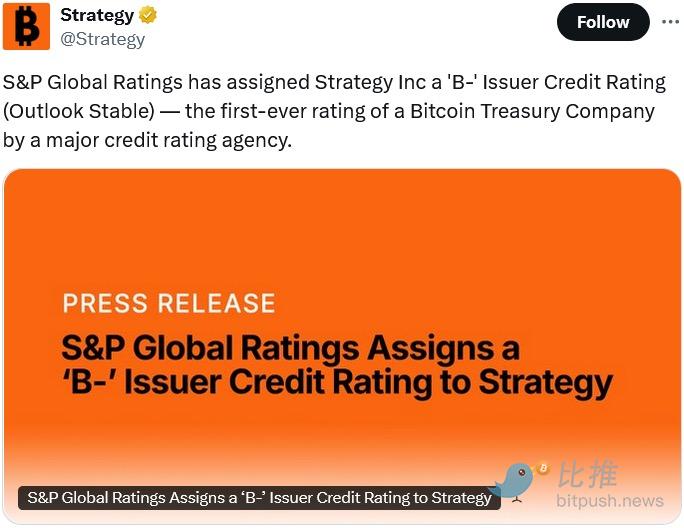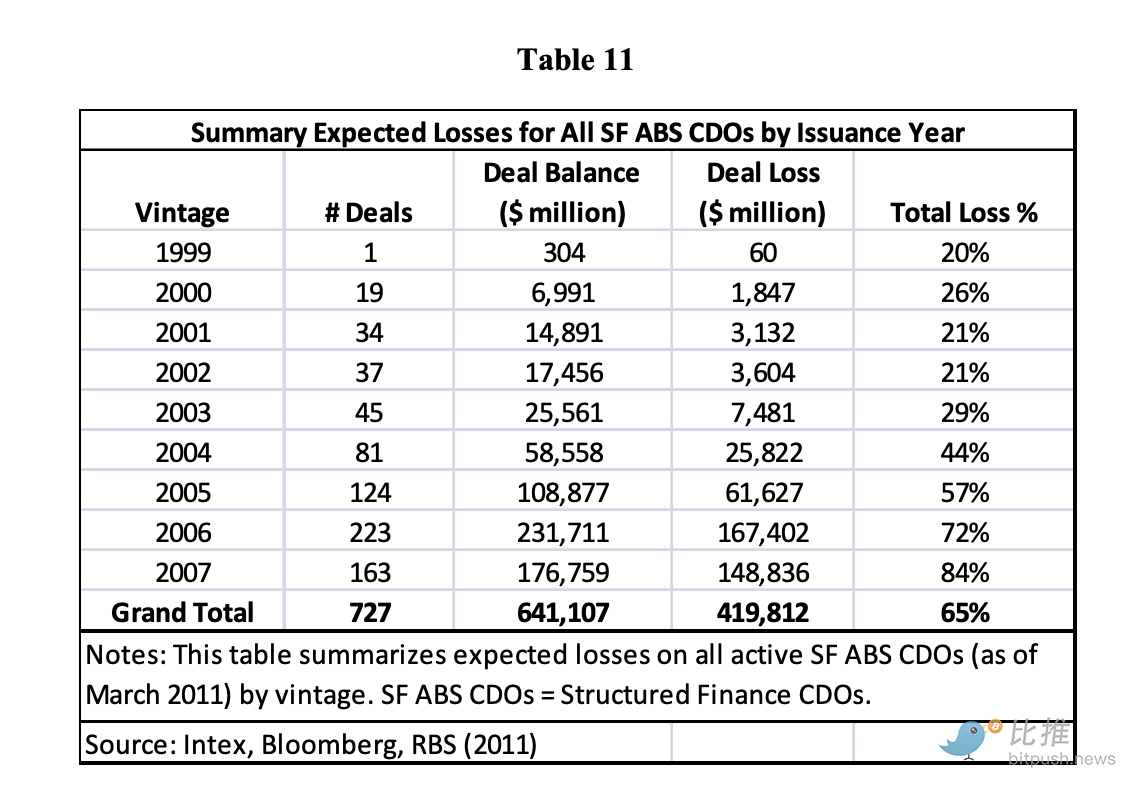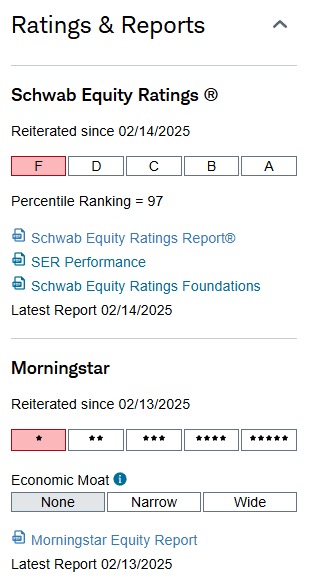Yesterday, S&P Global Ratings assigned Strategy Inc. (formerly MicroStrategy) a long-term credit rating of B- with a "stable" outlook.

Although this result seems "non-investment grade", it exposes a more fundamental problem in the context of the crypto industry: the traditional rating model still has a misalignment in understanding and pricing of new paradigm companies such as "Bitcoin Treasury Companies".
Strategy's model is almost unmistakable: it has acquired approximately 640,000 bitcoins through the issuance of stocks, convertible bonds, preferred stock, and bonds. In other words, its focus isn't on making money from its software business, but on building a business "centered around Bitcoin assets and supported by capital market financing capabilities." Traditional criteria for determining an "operating company" no longer apply.
However, S&P still highlighted its weaknesses in its rating:
High asset concentration, single structure, weak capital strength after risk adjustment, insufficient US dollar liquidity, all debts denominated in US dollars but assets mainly in Bitcoin... This "currency mismatch" logic is the usual review framework used by old credit institutions.
Traditional rating system: not always “correct”
Historically, credit rating agencies such as S&P have not always been accurate during major cycles of financial change.
Back in the mid-2000s, US structured finance products (particularly CDOs backed by subprime mortgages) received numerous high ratings upon issuance, many even receiving the AAA label. Research indicates that between 2005 and 2007, 727 asset-backed CDOs (SFABS CDOs) were issued in the US, totaling approximately $641 billion. However, these products subsequently suffered write-downs totaling approximately $420 billion.

Wikipedia and other sources point out that "many CDOs issued between 2005 and 2007, after receiving top ratings, were downgraded to junk status or suffered principal losses by 2010." In these events, financial giants like Lehman Brothers were deeply trapped in CDO and MBS assets. When the value of these assets plummeted and leverage got out of control, they eventually went bankrupt or were acquired.
In other words, structured products that rating agencies initially considered A (or higher) ultimately became the hardest hit. This illustrates a fact: when the market changes, old models are prone to misjudgment.
Regarding Strategy, perhaps traditional ratings agencies recognize that it lacks traditional diversified revenue streams, its liquidity may be suppressed by Bitcoin's volatility, and its debt denominated in US dollars and assets in Bitcoin, meaning that a sharp drop in Bitcoin's value could disrupt the debt repayment chain. However, the industry also recognizes the fact that the Strategy model is built on the underlying support provided by the capital market, Bitcoin's global liquidity, and institutional funds. Traditional models fail to fully incorporate this logic.
Not only S&P, but the entire traditional investment research system is using the old framework to look at crypto asset companies.
For example, Charles Schwab's Schwab Equity Ratings system (A to F rating, with F being the lowest performance expectation) has almost consistently rated Coinbase (COIN) and MicroStrategy (MSTR) as F over the past 3-5 years.

And what happened during this period?
COIN has doubled several times from 2022 to 2025, and Schwab still maintains F
MSTR has risen more than 1,000% since the beginning of 2020, and Schwab still maintains F
Even when MSTR's actual results in some quarters far exceeded analysts' expectations, the rating remained unchanged.
This is not a one-time thing, but a consistent low rating for many years.
in other words:
Prices are changing, markets are changing, the Bitcoin narrative is changing, but the model remains the same.
Schwab wasn’t “wrong”—it simply insisted, based on its modeling logic, that these companies “don’t fit traditional earnings logic.”
Similarly, Moody's and S&P have long maintained Coinbase's credit ratings in the speculative range, citing the following reasons:
High business volatility
Revenue is dependent on market cycles
Lack of predictable cash flow
Risk exposure is too concentrated
Sound familiar?
This is the same template as the logic for Strategy B-.
Summarize
In fact, it is not complicated: the root of the problem is that they are still using the valuation model of the previous generation to measure the asset form of the next generation.
Traditional financial institutions are not unprofessional; they simply cling to their established thinking. In their understanding, a high-quality asset must generate predictable cash flows, a healthy business must operate stably in a low-volatility environment, and its valuation must strictly adhere to comparable company analysis or an income-based approach.
However, emerging crypto treasury companies tell a completely different story. Their core logic is: "We don't rely on traditional operating cash flow to support asset value. Instead, we gain strong financing and market confidence through innovative asset structures." This isn't a simple debate of right and wrong, but a profound paradigm shift.
Therefore, S&P's B- rating for Strategy isn't crucial in itself. The truly symbolic signal is that the new model represented by Bitcoin Treasury has evolved to the point where traditional rating systems can no longer ignore it and must attempt to explain it.
But we must clearly understand that "interpretation" is not the same as "understanding," "understanding" is not the same as "acceptance," and "acceptance" certainly does not mean integrating it into the mainstream framework. The cognitive transformation of the old system will be as slow as the movement of a glacier—it will eventually awaken, but it will never happen overnight.
History has repeatedly proved that a brand new market structure often takes shape quietly when the old system is "half asleep and half awake".
The inclusion of Bitcoin on corporate balance sheets has gone from a pioneering experiment to a fait accompli. Whether the traditional world recognizes it, accepts it, and even truly understands it is only a matter of time.
Author: Seed.eth
Twitter: https://twitter.com/BitpushNewsCN
BitPush TG discussion group: https://t.me/BitPushCommunity
Bitpush TG subscription: https://t.me/bitpush








